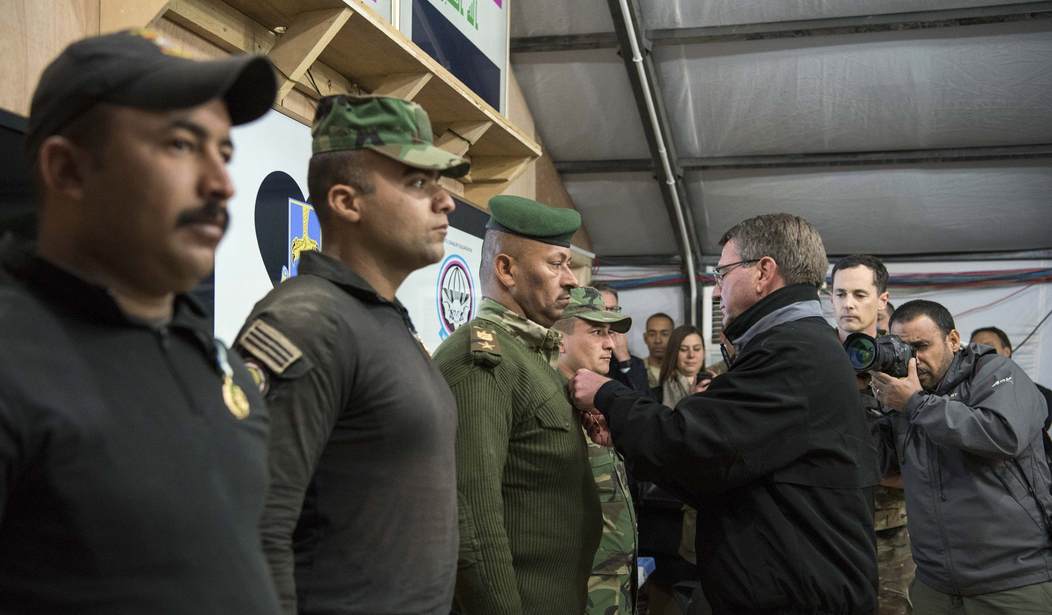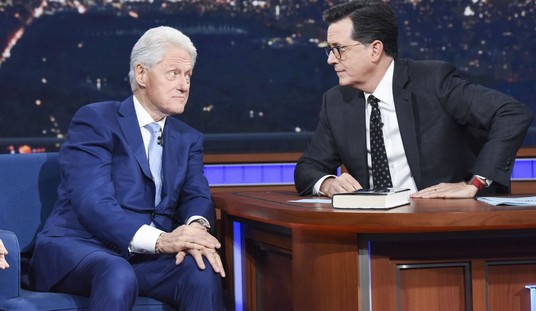Defense officials confirmed that the Islamic State has been pumping reinforcements into Mosul during the battle that was launched in mid-October, but said the maintained level of militants there doesn’t indicate a stalemate.
Defense Secretary Ashton Carter dropped into Iraq on Sunday to thank U.S. forces and visit with regional leaders including Iraqi Prime Minister Haider al-Abadi and Kurdistan Regional Government President Masoud Barzani, as well as Peshmerga fighters.
Carter toured Qayyarah West Airfield, a staging point and logistics hub for the operation to retake Mosul from ISIS, with Lt. Gen. Steve Townsend, commander of Operation Inherent Resolve.
“This hasn’t been an easy fight, won’t be an easy fight, but today I discussed it with Prime Minister Abadi. That was an excellent meeting with him. And it — we agreed it’s playing out pretty much according to the plan that he and I have been discussing together for these many months,” Carter told reporters.
Townsend said the estimate that there are still 3,000 to 5,000 ISIS fighters in Mosul is “probably still accurate.”
“At the start of the campaign, we estimated somewhere between at the low end 3,500, at the high end, about 6,000. By our calculations we think we have killed or badly wounded over 2,000. So if you do the math, that’s still 3,000 to 5,000,” he said.
“I don’t think it suggests anything about a stalemate,” the general added. “This is a major urban area. Any army on the planet, to include the United States Army, would be challenged by this fight. And the Iraqi army has come back from near defeat two years ago, and now they’re attacking this major city, 400 kilometers from Baghdad.”
The United Nations said 1,959 Iraqi forces members were killed in November. Carter said the U.S., acting in an advisory role, is “constantly helping them to reset their forces after they carry out an operation.”
“And that’s part — that’s one of the roles we play here. We’re in an enabling role. We do equipping, logistics, sustainment,” he said. “…We help them with their own medical system so that they can treat their casualties, with mobility as well as all of the awesome military power of the United States, air power, artillery, and so forth, so that they can have battlefield success with minimal losses. But there still are significant losses because it’s a hard fight… look, it’s a war.”
Carter added that “at the same time that the Mosul campaign goes on, we systematically target and destroy ISIL’s leadership, ISIL’s external plotters here in Iraq, and we’ve done that with very substantial success.”
“So a significant part of their leadership has been killed. And the rest of it, knowing that they’re being hunted, are therefore forced to behave like hunted men. And that by itself also adds a benefit in the sense that their freedom to communicate, their freedom to move, their freedom to instill confidence in their forces is also reduced as we wipe out some of them, because the rest of them have to lie lower,” he said.
Townsend said intelligence shows the coalition targeting of ISIS leader Abu Bakr al-Baghdadi’s deputies is “affecting his life.”
“And Abu Bakr al-Baghdadi probably wishes he had more direct command and control over his formation than he does right now,” the general said. “That said, this is a cunning enemy, and he’s trying to find ways — just like we are, he’s trying to find ways to regain effectiveness. So we have to constantly stay after this every day of the fight to eventually win. And we will win.”









Join the conversation as a VIP Member